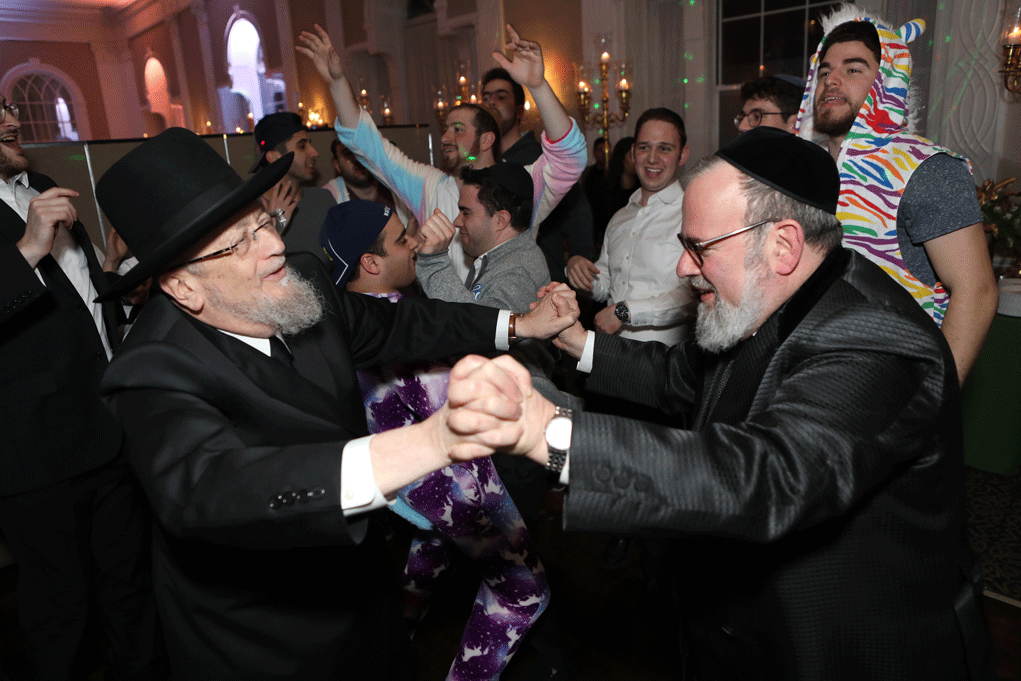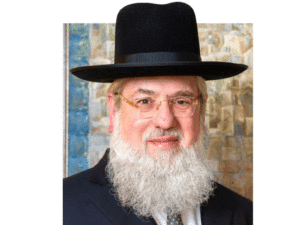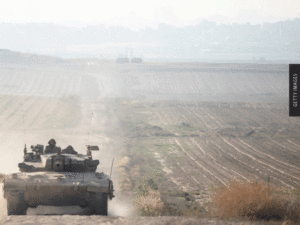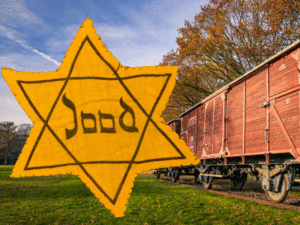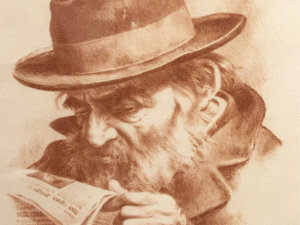Klal Yisroel is blessed with many wonderful chesed organizations. One of the most amazing is Chai Lifeline, which was founded 32 years ago and is still headed by Rabbi Simcha Scholar. A tremendous talmid chochom with a heart as big as Am Yisroel itself, he originally consulted with and closely followed the guidance of Rav Shlomo Zalman Auerbach zt”l. Constantly in touch with the gedolei hador, Rabbi Scholar has created a network of institutions that help families through the most agonizing niysonos of life.
The primary focus of all these is dealing with the myriad ramifications of children battling a deadly disease. Besides, of course, the child himself, the effects of such a situation upon the parents, the child’s siblings and numerous others can be overwhelming and actually unbearable without sympathetic and professional help. In the case of frum families, this requires a support group of physicians, social workers, volunteers and numerous others who are sensitive to the unique needs of frum families. This and more is Chai Lifeline.
The crowning glory of the organization is Camp Simcha, where all of this is put into practice 24/7 for several magical weeks during the summer. Also, several times a year, the organization holds retreats over a Shabbos for families with an extremely sick child. Some of these weekends, running from Thursday through Sunday, bring together a specific population who can share their trials, tribulations and joint anguish.
This past Shabbos, I was invited as the guest speaker at such an event, in this case for parents of a child with cancer, lo aleinu. Although I felt woefully unworthy to follow Rav Matisyahu Salomon, Rav Elya Brudny and other esteemed rabbonim, I could not turn down Rabbi Scholar’s request.
Although that is not the primary purpose of my column this week, I must take a moment to share my overwhelming emotions over this past Shabbos. I danced with fathers who each carried a child with some emblem of what he was suffering. Many exhibited the visible ravages of chemotherapy, the typical loss of hair, and pallor reflecting a cure that is often as devastating as the disease itself. Various breathing aids, evidence of tracheotomies, wheelchairs and other equipment were silent witness to the thousands of hours struggling for a semblance of normalcy and the ability to live an ordinary life.
Yet, both father and child – and elsewhere mothers and daughters – were beaming happily in the glow of oneg Shabbos and a respite from the often cruel realities of life with a dread illness. Everywhere, the presence and leadership of the devoted Camp Simcha counselors and other volunteers were on inspiring display.
Dancing with the radiant children and especially at a Motzoei Shabbos carnival, one could see the pure chesed and attention-to-detail of Chai Lifeline in glorious action. On Leil Shabbos, I listened to a roundtable discussion between afflicted fathers of their struggles with emunah, bitachon, juggling the needs of a sick child and the everyday obligations of families where everything is otherwise safe and secure. In the other room, wonderful women leaders, such as Mrs. Chani Juravel, led the mothers in the same type of dialogue, always with empathy and caring. I heard Rav Leizer Yudkovsky, the Stutchiner Rebbe, interpret every nuance of their pain and spiritual struggles as part of what the Mesillas Yeshorim calls the inevitable process and struggle of life itself, known as nisyonos. The emunah and bitachon of these fathers – and it was, I understand, the same at the women’s session as well – struck me deeply. I could only mutter to myself over and over, with tears in my eyes, “mi ke’amcha Yisroel.”
Since there are, unfortunately, many people in Klal Yisroel suffering through various nisyonos, I thought I would try to impart here some of what I shared with my listeners at various Shabbos sessions. I record this with the caveat that ba lelamed venimtzah lomeid, I gained far more from them than what I was able to provide, but, nevertheless, I hope that some of this will be helpful to at least a few people in distress. Although some of my sources centered on Parshas Shemos, the message is timeless. My first words to the retreat reflecting the profound wisdom of Rashi might be the clarion call of every retreat and support group. The posuk (Eichah 2:13) states, “To what can I compare you O daughter of Yerushalayim? To what can I liken you that I may comfort you, O maiden daughter of Tzion? Your ruin is as vast as the sea; who can heal you?”
Rashi teaches us, “When a catastrophe befalls a person, we tell him, ‘So and so has also suffered the same calamity.’ That is something of a consolation.” Of course, this doesn’t mean that anyone is happy to hear of another’s suffering. It merely assuages some of the loneliness of thinking that no one else could possibly understand what you are going through. The purpose of these gatherings is to gain some modicum of strength from those who do understand.
I shared a story, known in various forms but which I heard from a gadol in a very moving format. A baal teshuvah was going to the mikvah and fell on the slippery floor, suddenly exposing one of his more vulgar tattoos. The remnant of an earlier period in his life caused him to turn crimson with embarrassment, but a gnarled old chossid gently helped him physically and spiritually. Holding out his arm engraved with the Nazi numbers, he whispered to his new friend, “You had your gehennom and I had mine. Now let us immerse and remove our defilement.”
I softly suggested that the holiness of Shabbos can be our soothing waters of healing, since we have all experienced a common pain.
Rav Elazar Menachem Man Shach zt”l used to point out that the thirtieth kappitel of Tehillim begins with the words, “A song of the inauguration of the Bais Hamikdosh, ” implying that we will then sing of uplifting and joyous tidings about building the house of Hashem. Instead, however, it seems to veer off into talk of various problems and challenges. “I cried out to You and You healed me… You have preserved me from descent to the pit… You have transformed my lament into dancing.” What has happened here to the plan for this song?
Rav Shach cites the famous description of Chazal (Koheles Rabbah 1:34) that “He who has one hundred wants two hundred” etc. People tend to respond to the perennial question, “How’s it going?” with the shrugged-shoulder retort, “Could be better.” However, Rav Shach reminds us that this is not true. If it could have been better, Hashem, Who loves us, would have already made it better. Dovid Hamelech teaches us that we should realize that whatever we are experiencing at any moment is what is best for us. In a moment that may change, but for that moment, it is exactly what should be, whether or not we understand it or desperately want it to change. In other words, as difficult as it seems, we must try to look at the rest of our blessings and focus on all that is positive in our lives.
We might add, from the parsha, a universal Torah outlook upon the burning bush. The Torah states of Moshe Rabbeinu’s first nevuah that Hashem informed him that “the place upon which you stand is holy ground” (Shemos 3:5). The Chofetz Chaim commented, “Whatever a person is experiencing at any given time is his ‘holy ground.’ At that time in his life, Hashem wants the person to serve Him under difficulty and pain, sometimes his own and sometimes that of those he loves so dearly. The Baal Shem Tov, too, derived this teaching from the posuk (Devorim 4:29) which states, “From there (mishom) you will seek Hashem and you will find Him.” He concludes, “You can discover and have an encounter with Hashem in whatever circumstances you find yourself.” Instead of thinking or saying, “I cannot feel the presence of Hashem under these conditions,” a person must call out to his Creator when things look bleak, and for that there is a promise that He will be found.
Rav Yitzchok Zilberstein relates a beautiful story about the rosh kollel of one of the kollelim in his area of Ramat Elchonon in Bnei Brak. Rav Zilberstein had just entered a hospital lobby to be mevaker choleh when he noticed the young, vibrant rosh kollel copying down the names of many doctors in the hospital. “Are you okay, Reb Yossi?” Rav Zilberstein inquired.
“Why yes, rebbi,” he responded, puzzled. “Everything is boruch Hashem great.
“Well, then, why are you writing the names of so many doctors and their specialties?”
Now the rosh kollel laughed heartily in response. “You see, rebbi, not everyone knows medicine like you. I, for one, am not an expert in anatomy or physiology, but I would like to thank Hashem in the morning for every part of my body that works beautifully. I therefore recorded that cardiologists treat the heart, pulmonologists the lungs, etc.”
The anecdote reminds us that we should never forget, even amidst proper attention to things that have gone terribly wrong, that there is still much for which to be grateful. Torah giants assure us that this perspective will grant us a measure of much-needed tranquility.
During the day, since it was just after laining Parshas Shemos, I pointed out some of the dramatic references in the sedra to serving Hashem in difficult times. The posuk (1:9) records that Paroh warned his people that the Bnei Yisroel “wage war against us, v’alah, and go up from the land.” The Medrash here adds that “Klal Yisroel arises from the lowest of rungs,” as Dovid Hamelech (Tehillim 44:27-28) predicts, “For prostrated to the dust is our soul, stuck to the earth is our belly. Arise! Assist us! And redeem us for the sake of Your kindness.” It is the cries of Klal Yisroel that will bring about our geulah, just as we first met our redeemer crying.
However, his cry was a silent one. As the Bais Yisroel notes, the Torah does not say that “she heard his cry,” but saw (2:6) that he was crying. Says the Gerrer Rebbe, “a silent cry is the hallmark of the Jew.” He cites the posuk (Tehillim 13:17), “My soul will cry in its hidden chamber.” Chazal (Chagigah 5b) teach that this means that Hashem has a special place where, kevayachol, He goes to cry. We learn everything we know from Hashem. Sometimes we must go to cry in our secret place, wipe our tears and return to our other children and family with a smile and hope blazing in our eyes (see Pachad Yitzchok, Rosh Hashanah 4:3).
Finally, the Sefas Emes (Vayeishev 5695, page 142) teaches that “sometimes a person must be poshet tzurah velovesh tzurah, remove one garment and put on another. This refers to a time when he is in a period of nisayon and left with only kista dechiyusa (a weak hold on life). That is the time to put on a garment of hope and positive faith.” I dared to add that the Sefer Hachinuch often (see mitzvah 15) teaches us that “a person becomes what he does.” Showing others, and especially Hashem, that we have bitachon in Him can be life-changing and bring yeshuos. May we soon be zocheh to the ultimate yeshuah bimeheirah beyomeinu.
